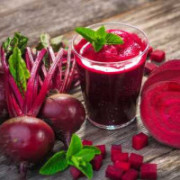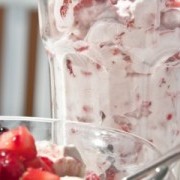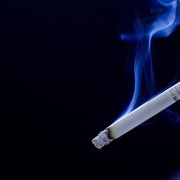chris is awesome
Uncategorized If you’re like most people who have struggled with their weight for years, you’ve watched helplessly as the growing obesity rate increased the diabetes rate – and worried about your own vulnerability to this disease. Now, there’s a new name for it, diabesity, and all you can still do is look around helplessly.
If you’re like most people who have struggled with their weight for years, you’ve watched helplessly as the growing obesity rate increased the diabetes rate – and worried about your own vulnerability to this disease. Now, there’s a new name for it, diabesity, and all you can still do is look around helplessly.
There are still no effective answers to help people lose weight and maintain that weight loss without being hungry all the time. You know the frustration of yo-yo dieting, of working so hard to lose 40 or 60 pounds, only to gain it back easily and quickly. You’ve been on too many diets to count. Losing weight has never been your problem; keeping it off has been the issue.
But your doctor or nutritionist or personal trainer usually has only one answer for you when you ask them what to do about your “weight problems”: eat less and exercise more. They might not say it in so many words, but the message is clear. It’s your fault. You’re not doing enough. You must do more, stay hungry, count every calorie if you want to enjoy permanent weight loss.
They’re wrong. Obesity is a disease, not something that you can fix simply by monitoring your calorie intake, starving yourself – especially not by starving yourself – and doing hours of cardio a week. In fact, this attitude promotes obesity and yo-yo dieting. Indeed, it may have helped spur the diabesity epidemic.
Obesity, Diabetes, and Diabesity
Experts and government health agencies have been concerned about rising obesity rates for years, knowing that it could become a public health crisis. Obesity not only increases the risk for many serious medical conditions, but it is also the main risk factor for type 2 diabetes. But none of the supposed “experts” knew exactly what to do about this issue.
Try as they might, they couldn’t get people to eat less of the diet they usually eat, live with hunger rumbling in the pit of their stomachs, and exercise more. Oh, hundreds of thousands of people would do it for awhile, but it didn’t last long. They fell off the diet wagon, and then they’d gain all the weight back.
Despite their efforts and intelligence, experts couldn’t solve the obesity puzzle. The worldwide population gained more and more weight while nutritional experts, scientists, and government officials tried to figure it out. Now, we have a worldwide epidemic called diabesity that may result in astronomical healthcare costs, shattered lives, and massive numbers of deaths. There is a solution to this puzzle, but it cannot be solved with the same mindset (weight loss theory) that created it. Diabesity takes a more in-depth approach.
A Look at Obesity and Diabesity
Doctors have known about the link between obesity and diabetes for some time. Both are metabolic dysfunctions stemming from the same cause. Diabesity (diabetes + obesity) is the new name created to show the close relationship between these two diseases. Diabesity includes something as minor as insulin resistance (if you can call that “minor”) or as major as full-blown diabetes.
Diabesity has become a global health crisis, an epidemic that may be worse than any the world has ever seen. This disease affects more than one billion people worldwide, 100 million of them, Americans.
Just look at the numbers for obesity, diabetes, and diabesity:
- More than 70 percent of Americans are overweight or obese.
- About 90 percent of people who are obese will develop type 2 diabetes, according to the Centers for Disease Control.
- The CDC also estimates that more than 100 million U.S. adults have diabetes or prediabetes, a condition that often becomes diabetes if not treated.
- 50 percent of Americans over 65 have diabesity.
Health Effects of Obesity and Diabesity
Diabesity causes serious health problems, including death. Some of the health effects include:
- Cardiovascular disease
- Stroke
- Kidney disease
- Some Cancers
- High blood pressure
- Arteriosclerosis (hardening of the arteries)
- Alzheimer’s disease
- Nerve damage
- Blindness
- Death
Diabesity: The Metabolic Link Many Doctors Still Don’t Know
Though genetics play a role in obesity and type 2 diabetes, your dietary habits have a huge influence on the development of both diseases. But doctors often treat them differently. Consider this:
If you have type 2 diabetes, your condition is caused by a breakdown of your body’s ability to use insulin. Doctors know it’s a disease, so your doctor gives you dietary guidelines to stabilize your blood sugar levels. If your condition warrants, your doctor prescribes insulin and gives you instructions for measuring your blood sugar so that you know how much insulin to give yourself at certain times, which will also balance your blood sugar levels. At no time (usually) does your doctor make you feel to blame for your condition.
If you’re overweight, your condition is caused by a breakdown of your body’s ability to balance calories naturally and effortlessly. If you ask your doctor for weight loss advice, you will probably get some version of the “calorie deficit” theory involving counting calories and exercising. Your doctor thinks you are in charge of how many calories your body takes in and burns. They think you need to count your calories because your body is incapable of doing the job it was designed to do.
Obesity is Not Your Fault
It is time to stop blaming yourself for your weight problems, for years of yo-yo dieting and your inability to lose weight. It is not your fault. Repeat this out loud: IT IS NOT MY FAULT.
It has nothing to do with a lack of willpower or moral failing. Rather, it has everything to do your setpoint and metabolism.

Setpoint: The Hidden Cause of Obesity Revealed
An elevated setpoint is the real cause of the out-of-control obesity rate and, by extension, the diabesity epidemic. The setpoint weight is the amount of fat your body has determined you need. It gets this information from your hormones, which bases its decision on the quality of the foods you eat and other lifestyle factors.
It vigorously defends this weight, and it will fight you if you go try to lose weight by starving yourself or cutting calories very much. You will lose weight if you slash calories, but as soon as you go off that crash diet and eat normally again, you’ll gain all that weight back and then some.
If you want to maintain the weight you lost, you can do that. But you’ll be condemned to eating 1,200 calories, or whatever low amount it took for you to lose those pounds, for the rest of your life. Guaranteed.
Most people cannot stay on a diet for the rest of their lives, so they go off of it and gain the weight back…again…and again…and again. That’s right. These types of calorie restrictive diets cause yo-yo dieting, not long-term weight loss. Experts and the diet industry have been promoting methods guaranteed to make you pack on the pounds – and keep them on.
Some of these methods include:
- Processed foods, delivered right to your door (Jenny Craig, Nutri-Systems)
- You can eat anything you want, as long as you don’t exceed a certain number of points. (Weight Watchers)
- Any diet plan that has you counting calories, and treats all calories the same. (Pretty much all diets.)
Your setpoint weight is raised or lowered by the quality of the calories you eat. If you eat primarily poor quality food, such as sugar and refined carbohydrates, it will raise your setpoint and you will gain weight, or you will not be able to keep the weight off once you lose it. You’ll also eat more of these foods than you should.

About those Calories…
Calories are important. If you eat too many of them, you will gain weight. But the standard calorie deficit advice is far too simplistic. It treats all calories the same, when they actually have different effects on your body, depending on where the calories come from.
It takes more calories, for instance, to digest protein than it does starch. Plus, research shows it is impossible for your body to turn protein into fat. All macronutrients go through different metabolic processes and have different effects on the body.
Once your body and hormones are healed, your body regulates your calories for you, which is the job it was designed to do. You don’t have to count calories; your body does it for you.
There are also a number of simple lifestyle changes you can make to get your metabolism to burn fat like a naturally thin person. All of these affect your setpoint, the real cause of weight gain.
Want to Reduce your Risk of Diabesity? Lower your Setpoint Weight!
Here are simple principles to lower your setpoint weight:
- Keep your food selections as close to nature as possible, for example, plants you could gather or animals you could hunt. This does not necessarily mean organic. It means cut out, or cut WAY down, on packaged and processed foods.
- Load your plate with non-starchy vegetables at each meal, at least half of your plate, and at least 10 servings a day. Green, leafy vegetables are best, the darker green, the better they are for you. Good choices include kale, spinach, and broccoli.
- Eat nutrient-dense protein, 3-6 servings a day. Sardines, tuna, salmon and cottage cheese are great choices.
- Enjoy whole-food fats, 3-6 servings a day. Great examples are chia seeds, coconut milk, flax seeds.
- Have some yummy low fructose fruits (0-3 servings) Good choices are goji berries, orange, strawberries, blueberries
- You can also occasionally enjoy up to 1 serving a day of most dairy products, and up to 1 serving per day of other fats.
Foods to avoid
Starch/Starchy Vegetables: Avoid starches as much as possible. Because they are low in fiber and low in protein content, they are very easy to overeat. Our bodies don’t need starches at all, so it’s best to stay away from them.
Sweets and Sweetened Beverages: Stay away from any foods that have extra sugar added. Like starchy foods, sweets are very easy to overeat. Several studies have shown that sugar “turns off” leptin, the hormone that makes you feel full, and is as addictive as cocaine. That is likely why you can’t stop chowing down on the donuts or sticking your hand in the cooking jar. Sugar also raises the setpoint regardless of the calories in the food.
Beyond Food
There are a few other SANE ways to lower your setpoint weight.
Stay hydrated
Staying hydrating is crucial for reprogramming your setpoint weight. Getting enough water helps your cells burn fat, and it may keep you from overeating. If you drink a glass of water before every meal, you’ll be surprised at how full it will make you feel. This is an easy, healthy way to keep you from overeating, so why not give it a try?
Get Enough Sleep
Sleep is incredibly important for your health and to help you achieve your long-term weight loss goals. A number of studies have shown that folks who don’t get enough sleep have elevated levels of cortisol, a stress hormone known to cause belly fat.
For your SANEity (and SANE weight loss), try to get 7-8 hours of quality sleep a night. If you usually struggle with insomnia or have trouble staying asleep, see what happens after you’ve been eating SANEly for a few weeks. The SANE way of eating will heal your body, which could also fix your sleeping problems. You may be sleeping like a baby in no time at all.
De-stress Regularly
Stress is a huge part of daily life, but it is terrible for your setpoint. Extended stressful periods cause cortisol to flood your bloodstream, elevating your setpoint and depositing fat on your stomach. There are many ways to distress.
- Practice formal meditation
- Go to the symphony
- Take a walk
- Visit a petting zoo
- Have a massage
- Practice yoga
- Anything that makes you happy is actually relaxing, so go for it.
Next Step: Helping Obesity and Diabesity with SANE
Ready to finally break free from the yo-yo dieting rollercoaster that can lead to diabesity? By balancing your hormones and lowering your body’s set-point weight, SANE is the solution you’ve been dreaming of.
Want to know the exact foods and serving sizes scientifically proven by over 1,300 peer-reviewed research studies to boost metabolism, burn fat and enjoy virtually effortless weight loss like a naturally thin person?
Begin your exciting journey to lasting, healthy weight loss today. Download the free SANE metabolism boosting food list, cheat sheet and “Eat More, Burn More” weight loss program by clicking here.

Test post
UncategorizedHow to lose weight
Lorem ipsum dolor sit amet, consectetur adipiscing elit, sed do eiusmod tempor incididunt ut labore et dolore magna aliqua. Ut enim ad minim veniam, quis nostrud
exercitation ullamco laboris nisi ut aliquip ex ea commodo consequat.Lorem ipsum dolor sit amet, consectetur adipiscing elit, sed do eiusmod tempor incididunt ut labore et dolore magna aliqua. Ut enim ad minim veniam, quis nostrud
exercitation ullamco laboris nisi ut aliquip ex ea commodo consequat.Lorem ipsum dolor sit amet, consectetur adipiscing elit, sed do eiusmod tempor incididunt ut labore et dolore magna aliqua. Ut enim ad minim veniam, quis nostrud clicking text exercitation ullamco laboris nisi ut aliquip ex ea commodo consequat.
Duis aute irure dolor in reprehenderit in voluptate velit esse cillum dolore eu fugiat nulla pariatur. Excepteur sint occaecat cupidatat non proident, sunt in culpa qui officia deserunt mollit anim id est laborum.
[ADD BOX with in post HTML HERE]
Eat The Right Veggies
[ADD BOX with shortcode here] use this shortcode:

Top 3 Tips for a SANE Approach to Nutrition Labels
UncategorizedIf you have ever looked at a nutrition label, you have seen these percentages:
Many people give these percentages a quick glance and decide whether the food is nutritious or not. Double digit percentages equal “nutritious.” Single digits are not as impressive. Here are three quick questions that help with this evaluation:

1. How many calories does it take to get that nutrition?
As you know from SANE, maximizing nutrition per calorie is key for long-term fat loss and robust health. The nutrition label above does not represent a food that maximizes nutrition per calorie. While it seems logical to assume that the food labeled above is a “good source” of Vitamin A since 10% is provided, note that takes 200 calories to provide that Vitamin A. Compare that to carrots which give us about 1,700% of our Daily Value of Vitamin A in 200 calories. It’s not about nutrition per serving, especially since serving sizes are arbitrary for most foods. It’s about nutrition per calorie.
2. What is my goal?
The percentages on nutrition labels are percentages of “Daily Values.” These Daily Values were developed during World War II to help prevent malnutrition in soldiers. Avoiding malnutrition is a much different goal than long-term fat loss and robust health. Unless you are satisfied with avoiding malnutrition, then the % Daily Value isn’t particularly useful.
3. Do I really need to read this?
Channeling author Michael Pollan, people kept themselves fit and healthy for thousands of years before we had nutrition labels. Why do we need them now, especially once we know that nutrition labels do not tell us what really matters—nutrition per calorie—and do tell us information which has little to do with our goals (long-term fat loss and robust health vs. avoiding malnutrition)?
In fact, I often wonder if focusing on nutrition labels can be counterproductive. For example, taking a nutrition label at face value, it’s easy to be lead to believe that a “low-calorie” serving of sugar-saturated and metabolism-clogging cereal is “healthy” because it provides 25% of the of Vitamin C necessary to avoid malnutrition. That’s incorrect and overly complex.
You may find it simpler and more SANE to forget about percentages and counting calories and to focus on enjoying as many non-starchy vegetables, lean sources of protein, berries, citrus fruits, nuts, and seeds, as you want, whenever you want. By focusing simply on eating more—but smarter—we can:
- Stay satisfied 24/7
- Avoid overeating without trying
- Heal our hormones
- Enjoy a wide variety of delicious foods
- Provide our body with the abundance of nutrition necessary for long-term fat loss and robust health
Most importantly, we can stop doing math and start enjoying food again.

Eating More Does Not Cause Long-Term Fat Gain
Uncategorized
“[We found] highly significant inverse correlations between food energy intake and adiposity [body fat].” – H. Keen, King’s College London
Eating more low-quality food causes us to gain body fat. But that does not mean eating more food produces the same result. Interestingly enough, eating more high-quality food has been clinically proven to cause body fat to be burned. The research on this topic comes from all over:
- J. Volek’s Study at the University of Connecticut: People in the eat-more-high-quality-food group ate 300 more calories per day and burned more body fat.
- F.F. Samaha’s Study at the University of Pennsylvania: People in the eat-more-high-quality-food group ate a total of 9,500 more calories and lost 200% more weight.
- P. Green’s Study from Obesity Research: People in the eat-more-high-quality-food group ate a total of 25,000 more calories without gaining any additional weight.
- S. Sondike’s Study from the Journal of Adolescent Health: People in the eat-more-high-quality-food group ate a total of 65,000 more calories and lost 141% more weight.

How are these results possible? Research reveals two main reasons: First, a calorie is not a calorie. Second, an unclogged fat metabolism system burns excess calories instead of storing them. The next section will cover why a calorie isnot a calorie, so let’s turn first to how unclogging enables our body to burn—instead of store—excess calories.
In a Mayo Clinic study, researchers fed people 1,000 extra calories per day for eight weeks. A thousand extra calories per day for eight weeks totals 56,000 extra calories. Everyone gained sixteen pounds—56,000 calories worth—of body fat, right?
Nope.
Nobody gained sixteen pounds. The most anyone gained was a little over half that. The least anyone gained was basically nothing—less than a pound. How could that be true? People are eating 56,000 extra calories and gaining basically no body fat? How can 56,000 extra calories add up to nothing?
That’s because extra calories don’t have to turn into body fat. They could turn into heat. They could be burned off automatically. Researcher D.M. Lyon in the medical journal QJM reported: “Food in excess of immediate requirements…can easily be disposed of, being burnt up and dissipated as heat. Did this capacity not exist, obesity would be almost universal.”
Eating more and gaining less is possible because an unclogged metabolism has all sorts of underappreciated ways to process excess calories other than storing them as body fat. In the Mayo Clinic study, researchers measured three of them:
- Increase the amount of calories burned daily.
- Increase the amount of calories burned digesting food.
- Increase the amount calories burned via unconscious activity.
So how did some people ate 56,000 extra calories and gain essentially nothing? Instead of storing the excess calories as body fat, their unclogged metabolisms automatically increased the base amount of calories they burned.
On the surface this study seems shocking, but we have all seen examples of “eat more, burn more” in our day-to-day lives. Think about naturally thin people you know who eat a lot, exercise a little, and stay slim. They eat more and burn more. Just as eating less causes the fat metabolism system to slow down, eating more causes an unclogged metabolism to speed up.
The key to long-term fat loss isn’t eating less or exercising more. It’s getting our metabolism to burn rather than to store excess calories.
- Apfepoundaum M Bostsarron J, Lacatis D: Effect of caloric restriction and excessive caloric intake on energy expenditure. Am J Clin Nutr 1971; 24:1405-1409
- Bray GA. Obesity–a state of reduced sympathetic activity and normal or high adrenal activity (the autonomic and adrenal hypothesis revisited). Int J Obes. 1990;14 Suppl 3:77-91; discussion 91-2. Review. PubMed PMID: 2086518.
- D. M. Lyon , And D. M. Dunlop, the Treatment of Obesity: A Comparison of the Effects of Diet And of Thyroid Extract, QJM 1: 331-352.
- Fam BC, Morris MJ, Hansen MJ, Kebede M, Andrikopoulos S, Proietto J, Thorburn AW. Modulation of central leptin sensitivity and energy balance in a rat model of diet-induced obesity. Diabetes Obes Metab. 2007 Nov;9(6):840-52. PubMed PMID: 17924866.
- Flier JS. The adipocyte: storage depot or node on the energy information superhighway? Cell. 1995 Jan 13;80(1):15-8. Review. PubMed PMID: 7813011.
- Friedman JM, Halaas JL. Leptin and the regulation of body weight in mammals. Nature. 1998 Oct 22;395(6704):763-70. Review. PubMed PMID: 9796811.
- Greene P, Willett W, et al. Pilot 12-week feeding weight loss comparison: low-fat vs. low-carbohydrate (ketogenic) diets [abstract]. Obes Res. 2003;11:A23.
- Gulick A: A study of weight regulation in the adult human body during overnutrition. Am J Physiol 1922; 60:371-395
- Jéquier E. Leptin signaling, adiposity, and energy balance. Ann N Y Acad Sci. 2002 Jun;967:379-88. Review. PubMed PMID: 12079865.
- Keen H, Thomas BJ, Jarrett RJ, Fuller JH. Nutrient intake, adiposity, and diabetes. Br Med J. 1979 Mar 10;1(6164):655-8. PubMed PMID: 435710; PubMed Central PMCID: PMC1598272.
- Leibel RL, Rosenbaum M, Hirsch J. Changes in energy expenditure resulting from altered body weight. N Engl J Med. 1995 Mar 9;332(10):621-8. Erratum in: N Engl J Med 1995 Aug 10;333(6):399. PubMed PMID: 7632212.
- Levine JA, Eberhardt NL, Jensen MD. Role of nonexercise activity thermogenesis in resistance to fat gain in humans. Science. 1999 Jan 8;283(5399):212-4. PubMed PMID: 9880251.
- Levine JA. Non-exercise activity thermogenesis (NEAT). Best Pract Res Clin Endocrinol Metab. 2002 Dec;16(4):679-702. Review. PubMed PMID: 12468415.
- Miller DS, Mumford P, Stock MJ: Gluttony-2. Thermogenesis in overeating man. Am J Clin Nutr 1967; 20:1223-1229
- Riestra JL, Skowsky WR, Martinez I, Swan L. Passive transfer of an appetite suppressant factor. Proc Soc Exp Biol Med. 1977 Nov;156(2):236-40. PubMed PMID: 337318.
- Samaha FF, Iqbal N, Seshadri P, Chicano KL, Daily DA, McGrory J, Williams T, Williams M, Gracely EJ, Stern L. A low-carbohydrate as compared with a low-fat diet in severe obesity. N Engl J Med. 2003 May 22;348(21):2074-81. PubMed PMID: 12761364.
- Sondike, S., et al. “The Ketogenic Diet Increases Weight Loss But Not Cardiovascular Risk: A Randomized Controlled Trial.” Journal of Adolescent Health 26: 91, 2000
- Sopko G, Jacobs DR Jr, Taylor HL. Dietary measures of physical activity. Am J Epidemiol. 1984 Dec;120(6):900-11. PubMed PMID: 6507429.
- Volek J, Sharman M, Gómez A, Judelson D, Rubin M, Watson G, Sokmen B, Silvestre R, French D, Kraemer W. Comparison of energy-restricted very low-carbohydrate and low-fat diets on weight loss and body composition in overweight men and women. Nutr Metab (Lond). 2004 Nov 8;1(1):13. PubMed PMID:15533250; PubMed Central PMCID: PMC538279.
- Whipp BJ, Bray G, Koyal SN: Exercise energetics in normal man following acute weight gain. Am J Clin Nutr 1973; 26:1284-1286

Study Shows Losing Weight via the Traditional Approach is Harder than Quitting Smoking
Uncategorized
“It is reasonable to assume that persons with relatively high daily energy expenditures would be less likely to gain weight over time compared with those who have low energy expenditures. So far, data to support this hypothesis are not particularly compelling.” – American Heart Association
Some people are able to lose weight and keep it off by eating less and exercising more. A lot more people are not. The last forty years of fat-loss data reveal that the traditional approach can work—just not very often. Studies show that eating less and exercising more does not keep body fat off long-term 95% of the time. To put this 95% failure rate into perspective, quitting smoking cold turkey has a 94.5% failure rate. In other words, more people are able to quit smoking cold turkey than are able to keep body fat off using the traditional approach.
If eating less and exercising more works for you long-term, excellent. If not, science shows there is another—more effective—approach: Eat more. Exercise Less. Smarter.
Even better, research shows that this alternative approach is more effective at facilitating long-term fat loss and robust health. For example, researchers at Skidmore College compared a traditional “eat less, exercise more—harder” program against an “eat more, exercise less—smarter” program. Let’s call the groups in the study the Harder Group and the Smarter Group.

The Harder Group ate the traditional diet of 60% carbohydrates, 15% protein, and 25% fat while doing low-quality cardiovascular exercise for forty minutes per day, six days per week. Low-quality cardiovascular exercise refers to exercises like walking, biking, and jogging, which must be done for hours to impact our health and weight. The Smarter Group ate a higher-quality diet* of 40% carbohydrate, 40% protein, and 20% fat while exercising only 60% as much, but with higher-quality**. The study lasted for 12 weeks and included 34 women and 29 men between the ages of 20 and 60.
At the end of the study, the Harder Group “successfully” ate less and exercised eighteen hours more than the Smarter Group. After examining the results though, the researchers concluded:
The primary finding of the current study is that a lifestyle modification program consisting of high-intensity cardiovascular and resistance training combined with a balanced carbohydrate and protein diet results in greater improvement in body composition, cardiovascular risk factors, and muscular strength than a program comprised of a traditional diet and moderate-intensity exercise regimen commonly recommended for weight loss.
Less academically speaking, eating more and exercising less—smarter—was more effective than the traditional approach. Here’s the data:
Combine the increased effectiveness of eating more and exercising less—smarter—with avoiding hunger or spending hours in the gym, and this smarter scientific approach may be just what the doctor ordered for the other 95% of us.
Next week we’ll start to explore the science of why eating less and exercising more fails to burn fat long term 95% of the time.
- Haskell WL, Lee IM, Pate RR, Powell KE, Blair SN, Franklin BA, Macera CA, Heath GW, Thompson PD, Bauman A; American College of Sports Medicine; American Heart Association. Physical activity and public health: updated recommendation for adults from the American College of Sports Medicine and the American Heart Association. Circulation. 2007 Aug 28;116(9):1081-93. Epub 2007 Aug 1. PubMed PMID: 17671237.
- Crawford D, Jeffery RW, French SA. Can anyone successfully control their weight? Findings of a three year community-based study of men and women. Int J Obes Relat Metab Disord. 2000 Sep;24(9):1107-10. PubMed PMID: 11033978.
- Summerbell CD, Cameron C, Glasziou PP. WITHDRAWN: Advice on low-fat diets for obesity. Cochrane Database Syst Rev. 2008 Jul 16;(3):CD003640. Review. PubMed PMID: 18646093.
- Pirozzo S, Summerbell C, Cameron C, Glasziou P. Should we recommend low-fat diets for obesity? Obes Rev. 2003 May;4(2):83-90. Review. Erratum in: Obes Rev. 2003 Aug;4(3):185. PubMed PMID: 12760443.
- ” A word about quitting success rates .” American Cancer Society :: Information and Resources for Cancer: Breast, Colon, Prostate, Lung and Other Forms. N.p., n.d. Web. 11 Jan. 2011. <http://www.cancer.org/Healthy/StayAwayfromTobacco/GuidetoQuittingSmoking/guide-to-quitting-smoking-success-rates>.
- Farnsworth E, Luscombe ND, Noakes M, Wittert G, Argyiou E, Clifton PM. Effect of a high-protein, energy-restricted diet on body composition, glycemic control, and lipid concentrations in overweight and obese hyperinsulinemic men and women.Am J Clin Nutr. 2003 Jul;78(1):31-9.
- Arora SK, McFarlane SI. The case for low carbohydrate diets in diabetes management. Nutr Metab (Lond). 2005 Jul 14;2:16. PubMed PMID: 16018812; PubMed Central PMCID: PMC1188071.
- Augustin LS, Franceschi S, Jenkins DJ, Kendall CW, La Vecchia C. Glycemic index in chronic disease: a review. Eur J Clin Nutr. 2002 Nov;56(11):1049-71.Review. PubMed PMID: 12428171.
- Baba NH, Sawaya S, Torbay N, Habbal Z, Azar S, Hashim SA: High protein vs high carbohydrate hypoenergetic diet for the treatment of obese hyperinsulinemic subjects. Int J Obes23 :1202 –1206,1999 .
- Børsheim E, Bui Q-UT, Tissier S, Kobayashi H, Ferrando AA, Wolfe RR. Effect of amino acid supplementation in insulin sensitivity in elderly. Fed Proc (in press).
- Brand-Miller J. Diets with a low glycemic index: From theory to practice. Nutrition Today. 1999;34:64–72.
- Brehm BJ, Seeley RJ, Daniels SR, D’Alessio DA: A randomized trial comparing a very low carbohydrate diet and a calorie restricted low fat diet on body weight and cardiovascular risk factors in healthy women. J Clin Endocrinol Metab88 :1617 –1623,2003
- Despres JP, Moorjani S, Lupien PJ, Tremblay A, Nadeau A, Bouchard C. Regional distribution of body fat, plasmalipoproteins, and cardiovascular disease. rteriosclerosis 1990;10: 497–511.
- Despres JP. Dyslipidaemia and obesity. Baillieres Clin Endocrinol Metab 1994; 8: 629–660.
- Due A, Toubro S, Skov AR, Astrup A. Effect of normal-fat diets, either medium or high in protein, on body weight in overweight subjects: a randomised 1-year trial. Int J Obes Relat Metab Disord. 2004 Oct;28(10):1283-90. PubMed PMID:15303109.
- Foster GD, Wyatt HR, Hill JO, McGuckin BG, Brill C, Mohammed S: A randomized trial of a low-carbohydrate diet. N Eng J Med348 :2082 –2090,2003
- Frisch S, Zittermann A, Berthold HK, Götting C, Kuhn J, Kleesiek K, Stehle P, Körtke H. A randomized controlled trial on the efficacy of carbohydrate-reduced or fat-reduced diets in patients attending a telemedically guided weight loss program. Cardiovasc Diabetol. 2009 Jul 18;8:36. PubMed PMID: 19615091; PubMed Central PMCID: PMC2722581.
- Frost G, Keogh B, Smith D, Akinsanya K, Leeds A. (1996). The effect of low-glycemic carbohydrate on insulin and glucose response in vivo and in vitro in patients with coronary heart disease. Metabolism, 45: 669-672.
- Gannon MC, Nuttall FQ, Saeed A, Jordan K, Hoover H. An increase in dietary protein improves the blood glucose response in persons with type 2 diabetes. Am J Clin Nutr. 2003 Oct;78(4):734-41. PubMed PMID: 14522731.
- Harrison BC, Leinwand LA. Fighting fat with muscle: bulking up to slim down.Cell Metab. 2008 Feb;7(2):97-8. Review. PubMed PMID: 18249167.
- Izumiya Y, Hopkins T, Morris C, Sato K, Zeng L, Viereck J, Hamilton JA, Ouchi N, LeBrasseur NK, Walsh K. Fast/Glycolytic muscle fiber growth reduces fat mass and improves metabolic parameters in obese mice. Cell Metab. 2008 Feb;7(2):159-72. PubMed PMID: 18249175.
- Kissebah AH, Krakower GR. Regional adiposity and morbidity. Physiol Rev 1994; 74: 761–811.
- Lasker DA, Evans EM, Layman DK. Moderate carbohydrate, moderate protein weight loss diet reduces cardiovascular disease risk compared to high carbohydrate, low protein diet in obese adults: A randomized clinical trial. Nutr Metab (Lond). 2008 Nov 7;5:30. PubMed PMID: 18990242; PubMed Central PMCID: PMC2585565.
- Layman DK, Boileau RA, Erickson DJ, Painter JE, Shiue H, Sather C, Christou DD. A reduced ratio of dietary carbohydrate to protein improves body composition and blood lipid profiles during weight loss in adult women. J Nutr. 2003 Feb;133(2):411-7. PubMed PMID: 12566476.
- Lejeune MP, Kovacs EM, Westerterp-Plantenga MS. Additional protein intake limits weight regain after weight loss in humans. Br J Nutr. 2005 Feb;93(2):281-9. PubMed PMID: 15788122.
- Low-carbohydrate diet in type 2 diabetes. Stable improvement of bodyweight and glycemic control during 22 months follow-up Jørgen Vesti Nielsen and Eva Joensson Nutr Metab (Lond). 2006; 3: 22. Published online 2006 June 14. doi: 10.1186/1743-7075-3-22. PMCID: PMC1526736
- McAuley KA, Hopkins CM, Smith KJ, McLay RT, Williams SM, Taylor RW, Mann JI. Comparison of high-fat and high-protein diets with a high-carbohydrate diet in insulin-resistant obese women. Diabetologia. 2005 Jan;48(1):8-16.
- McAuley KA, Smith KJ, Taylor RW, McLay RT, Williams SM, Mann JI. Long-term effects of popular dietary approaches on weight loss and features of insulin resistance. Int J Obes (Lond). 2006 Feb;30(2):342-9.
- Meckling KA, Sherfey R. A randomized trial of a hypocaloric high-protein diet, with and without exercise, on weight loss, fitness, and markers of the Metabolic Syndrome in overweight and obese women. Appl Physiol Nutr Metab. 2007 Aug;32(4):743-52. PubMed PMID: 17622289.
- Noakes M, Keogh JB, Foster PR, Clifton PM. Effect of an energy-restricted, high-protein, low-fat diet relative to a conventional high-carbohydrate, low-fat diet on weight loss, body composition, nutritional status, and markers of cardiovascular health in obese women. Am J Clin Nutr. 2005 Jun;81(6):1298-306.
- Nuttall FQ, Gannon MC. Metabolic response of people with type 2 diabetes to a high protein diet. Nutr Metab (Lond). 2004 Sep 13;1(1):652.
- Nuttall FQ, Gannon MC. The metabolic response to a high-protein, low-carbohydrate diet in men with type 2 diabetes mellitus. Metabolism. 2006 Feb;55(2):243-51.
- Parker, B., Noakes, M., Luscombe, N. & Clifton, P. (2002) Effect of a high-protein, monounsaturated fat weight loss diet on glycemic control and lipid levels in type 2 diabetes. Diabetes Care 25:425-430.
- Piatti PM, Monti F, Fermo I, Baruffaldi L, Nasser R, Santambrogio G, Librenti MC, Galli-Kienle M, Pontiroli AE, Pozza G. Hypocaloric high-protein diet improves glucose oxidation and spares lean body mass: comparison to hypocaloric high-carbohydrate diet. Metabolism. 1994 Dec;43(12):1481-7. PubMed PMID: 7990700.
- Samaha FF, Iqbal N, Seshadri P, Chicano KL, Daily D, Mcgrory J: A low carbohydrate as compared with a low fat diet in severe obesity. N Eng J Med348 :2074 –2081,2003 .
- Skov AR, Toubro S, Rønn B, Holm L, Astrup A. Randomized trial on protein vs carbohydrate in ad libitum fat reduced diet for the treatment of obesity. Int J Obes Relat Metab Disord. 1999 May;23(5):528-36. PubMed PMID: 10375057.
- Skov, A. R., Toubro, S., Ronn, B., Holm, L. & Astrup, A. (1999) Randomized trial on protein vs carbohydrate in ad libitum fat reduced diet for the treatment of obesity. Int. J. Obes. 23:528-536.
- Weigle DS, Breen PA, Matthys CC, Callahan HS, Meeuws KE, Burden VR, Purnell JQ. A high-protein diet induces sustained reductions in appetite, ad libitum caloric intake, and body weight despite compensatory changes in diurnal plasma leptin and ghrelin concentrations. Am J Clin Nutr. 2005 Jul;82(1):41-8
- Westerterp-Plantenga MS, Lejeune MP, Nijs I, van Ooijen M, Kovacs EM. High protein intake sustains weight maintenance after body weight loss in humans. Int J Obes Relat Metab Disord. 2004 Jan;28(1):57-64.
- Wolfe RR. The underappreciated role of muscle in health and disease. Am J Clin Nutr. 2006 Sep;84(3):475-82. Review. PubMed PMID: 16960159.
- Worthington BS, Taylor LE: Balanced low calorie vs high protein, low carbohydrate reducing diets. J Am Diet Assoc64 :47 –51,1974 .
- Yancy Jr WS, Olsen MK, Guyton JR, Bakst RP, Westman EC: A low-carbohydrate, ketogenic diet versus a low-fat diet to treat obesity and hyperlipidemia. Ann Intern Med140 :769 –777,2004
- Arciero PJ, Gentile CL, Martin-Pressman R, Ormsbee MJ, Everett M, Zwicky L, Steele CA. Increased dietary protein and combined high intensity aerobic and resistance training improves body fat distribution and cardiovascular risk factors. Int J Sport Nutr Exerc Metab. 2006 Aug;16(4):373-92. PubMed PMID: 17136940.



We strive to be fully accessible and our website is audited and compliant with Web Content Accessibility Guidelines 2.1.
If you would like to talk to a product specialist to order by phone or encounter any issues while using this site, please call us and we will be happy to assist: (347) 979-1735













